| Weight | 1 lbs |
|---|---|
| Dimensions | 9 × 5 × 2 in |
| host | mouse |
| isotype | IgG |
| clonality | monoclonal |
| concentration | concentrate, predilute |
| applications | IHC |
| reactivity | human |
| available size | 0.1 mL, 0.5 mL, 1 mL concentrated, 7 mL prediluted |
rabbit anti-CD56 monoclonal antibody (ZR421) 6103
Price range: $160.00 through $528.00
Antibody summary
- Rabbit monoclonal to CD56
- Suitable for: Immunohistochemistry (formalin-fixed, paraffin-embedded tissues)
- Reacts with: Human
- Isotype:IgG
- Control: Neuroblastoma, neuroendocrine carcinoma
- Visualization: Cell membrane
- 0.1, 0.5, 1.0 mL concentrated, 7 mL prediluted
rabbit anti-CD56 monoclonal antibody ZR421 6103
| antibody |
|---|
| Database link: human P13591 |
| Tested applications IHC |
| Recommended dilutions Concentrated 1:100-200 |
| Application Notes Positive control: Neuroblastoma, neuroendocrine carcinoma |
| Immunogen Recombinant fragment (around aa600-800) of human NCAM1 (CD56) protein |
| Size and concentration 7 mL prediluted or 0.1, 0.5, 1.0 mL and concentrated |
| Form liquid |
| Storage Instructions 2-8°C for short term, for longer term at -20°C. Avoid freeze / thaw cycles. |
| Purity affinity purified |
| Clonality monoclonal |
| Isotype IgG |
| Compatible secondaries goat anti-rabbit IgG, H&L chain specific, peroxidase conjugated, conjugated polyclonal antibody 9512 goat anti-rabbit IgG, H&L chain specific, biotin conjugated polyclonal antibody 2079 goat anti-rabbit IgG, H&L chain specific, FITC conjugated polyclonal antibody 7863 goat anti-rabbit IgG, H&L chain specific, Cross Absorbed polyclonal antibody 2371 goat anti-rabbit IgG, H&L chain specific, biotin conjugated polyclonal antibody, crossabsorbed 1715 goat anti-rabbit IgG, H&L chain specific, FITC conjugated polyclonal antibody, crossabsorbed 1720 |
| Isotype control Rabbit polyclonal - Isotype Control |
| target relevance |
|---|
| Protein names Neural cell adhesion molecule 1 (N-CAM-1) (NCAM-1) (CD antigen CD56) |
| Gene names NCAM1,NCAM1 NCAM |
| Mass 94574Da |
| Function FUNCTION: This protein is a cell adhesion molecule involved in neuron-neuron adhesion, neurite fasciculation, outgrowth of neurites, etc.; FUNCTION: (Microbial infection) Acts as a receptor for rabies virus. {ECO:0000269|PubMed:9696812}.; FUNCTION: (Microbial infection) Acts as a receptor for Zika virus. {ECO:0000269|PubMed:32753727}. |
| Subellular location SUBCELLULAR LOCATION: [Isoform 1]: Cell membrane; Single-pass type I membrane protein.; SUBCELLULAR LOCATION: [Isoform 2]: Cell membrane; Single-pass type I membrane protein.; SUBCELLULAR LOCATION: [Isoform 3]: Cell membrane; Lipid-anchor, GPI-anchor.; SUBCELLULAR LOCATION: [Isoform 4]: Cell membrane {ECO:0000305}; Lipid-anchor, GPI-anchor {ECO:0000305}.; SUBCELLULAR LOCATION: [Isoform 5]: Secreted.; SUBCELLULAR LOCATION: [Isoform 6]: Secreted {ECO:0000305}. |
| Structure SUBUNIT: (Microbial infection) Interacts with rabies virus glycoprotein. {ECO:0000269|PubMed:9696812}.; SUBUNIT: (Microbial infection) Interacts with Zika virus envelope protein E. {ECO:0000269|PubMed:32753727}.; SUBUNIT: Interacts with MDK. Found in a complex with SLC39A6, SLC39A10 and with NCAM1; this complex controls NCAM1 phosphorylation and integration into focal adhesion complexes during epithelial-tomesenchymal transition. Interacts with synaptic plasticity regulator PANTS. {ECO:0000250|UniProtKB:P13595}. |
| Post-translational modification PTM: Polysialylated at Asn-459 and Asn-488 by ST8SIA2 and ST8SIA4 (PubMed:28810663). Polysialylation modulates cell interactions by confering both attractive and repulsive properties that are highly regulated by ST8SIA2 and ST8SIA4 (PubMed:28810663). Polysialylation is formed on a-2,3-linked sialic acid of core glycans (PubMed:9774483). {ECO:0000269|PubMed:28810663, ECO:0000269|PubMed:9774483}. |
| Target Relevance information above includes information from UniProt accession: P13591 |
| The UniProt Consortium |
Data
 |
| Human neuroendocrine carcinoma stained with anti-CD56 antibody using peroxidase-conjugate and DAB chromogen. Note cell membrane staining of tumor cells. |
Publications
| pmid | title | authors | citation |
|---|---|---|---|
| We haven't added any publications to our database yet. | |||
Protocols
| relevant to this product |
|---|
| IHC |
Documents
| # | SDS | Certificate | |
|---|---|---|---|
| Please enter your product and batch number here to retrieve product datasheet, SDS, and QC information. | |||
Only logged in customers who have purchased this product may leave a review.

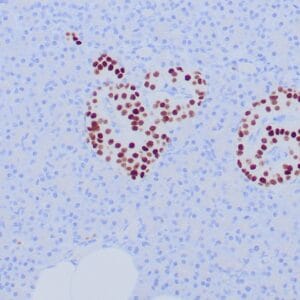
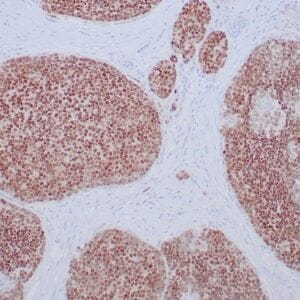
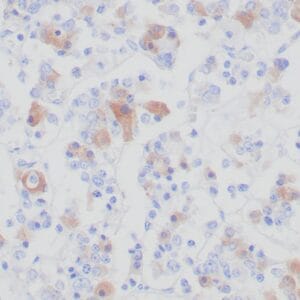
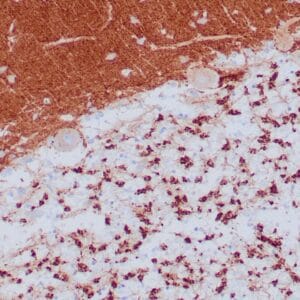
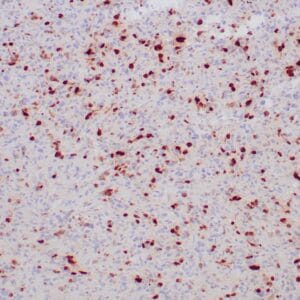

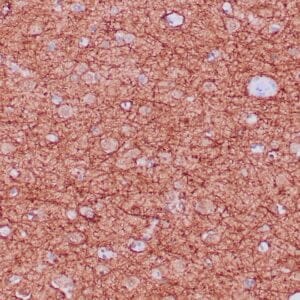
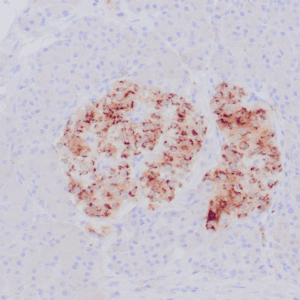
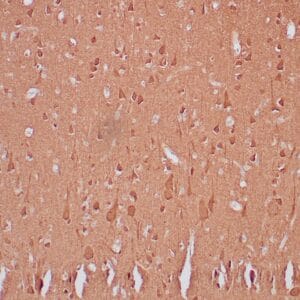
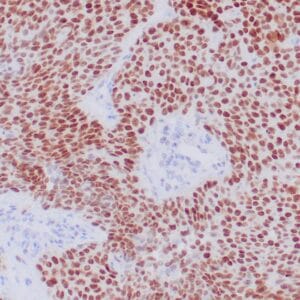
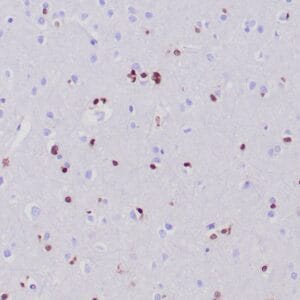
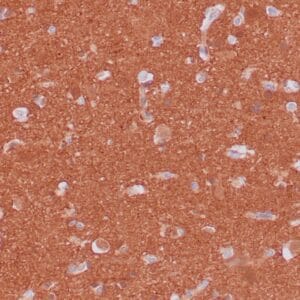
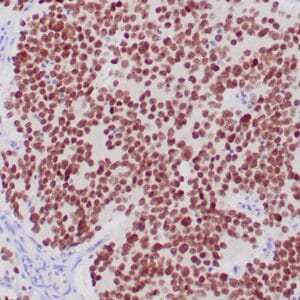
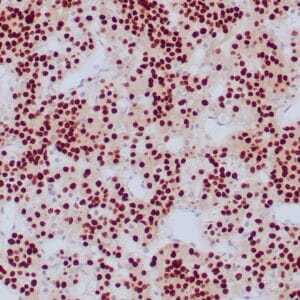
Reviews
There are no reviews yet.